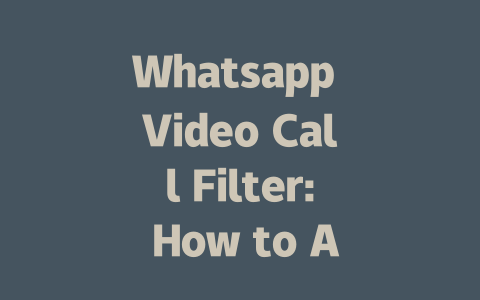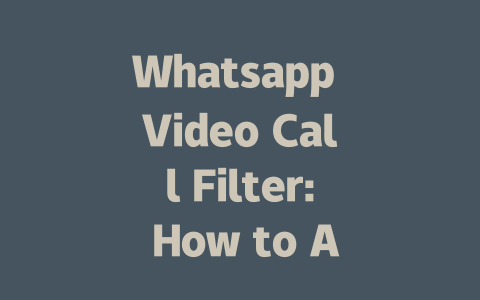You’ve probably been there—scrolling endlessly through social media or news apps, trying to stay on top of what’s happening in the world. But do you ever feel like you’re just chasing headlines without really understanding them? I know I used to. That’s why today, I’m sharing a few tricks I’ve learned over the years to keep up with the latest news in a smarter way. Trust me, it’s not as hard as you think.
Why Staying Informed Is Harder Than It Looks
Let me tell you a story. Last year, my friend Sarah was determined to read at least one article per day from a reputable source. She set alarms, downloaded apps, and even subscribed to newsletters. After three months, she admitted that she felt overwhelmed by all the information coming her way. The problem wasn’t lack of effort—it was how she approached staying informed.
The truth is, staying updated with the latest news requires more than just reading articles here and there. You need strategies that work for your lifestyle, so you can focus on quality over quantity. Let’s dive into some practical steps you can take right now.
Step 1: Choose Your Sources Wisely
Why does this matter? Because not all sources are created equal. When Google’s search robots crawl websites looking for credible content, they favor sites that have consistently high-quality information. So if you want reliable updates, pick sources that pass muster with both humans and machines.
Here’s a quick tip: Look for publications that cite primary sources, such as government reports or academic studies. For instance, if you’re following global trends, BBC News, Reuters, and The New York Times are solid bets because they often link directly to original documents.
Now, let me share an experience. A few months ago, I started narrowing down my go-to sources instead of hopping between dozens of platforms. By focusing on just three trusted outlets, I saved time and gained deeper insights. Try doing the same—you’ll notice the difference almost immediately.
Step 2: Use Alerts to Prioritize What Matters
Do you check your phone every hour to see if anything new has popped up? Stop torturing yourself! Instead, use alerts to bring the most important stories straight to you.
Here’s how I set it up:
Google’s official blog once mentioned that timely notifications help users engage better with content. Personally, I’ve found that limiting myself to only essential alerts keeps me focused while still keeping me informed.
Step 3: Organize Information Like a Pro
Staying updated isn’t just about consuming; it’s also about retaining. If you don’t organize what you learn, chances are you’ll forget most of it within hours.
Try these methods:
When I first started organizing my reads systematically, I realized how much more value I got out of each piece. Plus, having a record makes conversations with friends way smoother!
Bonus Tip: Avoid These Common Mistakes
Before wrapping up, let’s talk about pitfalls to avoid:
To reinforce trustworthiness, always double-check any claim using fact-checking websites like Snopes or FactCheck.org. Remember, good journalism should leave you feeling educated, not confused.
If you’re wondering about the variety of filters available during a Whatsapp video call in 2025, there’s quite a bit to explore. Users can experiment with up to 5-12 different filters or effects all within a single call. That means you aren’t limited to just one type—you could switch between beautification tools that smooth your skin tone and fun AR masks that turn your face into something entirely different. The platform encourages creativity by letting you mix and match these filters to suit your mood or the occasion. It might take a little trial and error, but finding the perfect combination is part of the fun.
Another exciting feature introduced in 2025 is the ability to use custom filters on your calls. You don’t have to stick with what Whatsapp provides; now, third-party developers can create unique filters, and you even have the option to design your own if you’re feeling adventurous. Just remember to check that any custom filter complies with Whatsapp’s community guidelines before using it. Compatibility isn’t an issue either, as the app ensures its features work seamlessly across both Android and iOS devices. So whether you’re chatting with friends on an iPhone or Android phone, everyone gets the same experience. And while internet connectivity is necessary for accessing most filters, some pre-downloaded options are available offline too. If at any point you accidentally apply a filter, no worries—just tap the “Filters” button again and select “None,” and you’re back to your usual camera view.
FAQs
# How many filters can I use during a Whatsapp video call in 2025?
In 2025, Whatsapp allows users to apply up to 5-12 different filters or effects during a single video call. These range from basic beautification tools to advanced AR masks. Experiment with combinations to find what works best for you.
# Can I use custom filters on Whatsapp video calls?
Yes, starting in 2025, Whatsapp introduced the ability to upload custom filters created by third-party developers or even design your own through their developer platform. Ensure the custom filters comply with community guidelines before applying them.
# Are video call filters available on both Android and iOS in 2025?
Absolutely! Whatsapp has ensured that all features, including video call filters, are compatible across both Android and iOS platforms as of
# Do I need an internet connection to apply filters during a Whatsapp video call?
Yes, an active internet connection is required to access and apply filters during a video call. Some pre-downloaded filters may work offline, but for the full range of options, staying connected to the internet is essential.
# Can I disable filters if I accidentally apply them during a call?
Of course! If you unintentionally apply a filter, simply tap the “Filters” button again and select “None” to revert to the original camera view. This option is readily available during any ongoing call.




